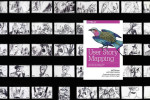Product Management for Dummies

Not just for dummies, this book is for everyone. Whether you’re new to product management, want to add to your skills, are hiring product managers, or creating a product management process this book has something for you.
Product Management For Dummies by Brian Lawley and Pamela Schure
Although the title makes is sound like a book for beginners, Product Management for Dummies has a lot to offer product managers at any level. There’s a lot you won’t find in other product management books; for example, a comprehensive review of different types of roadmaps, how to get to the next level in your product management career, and a product management skills self-assessment.
Product management as a topic is vast. The breadth of knowledge you need to be an effective product manager is very complex. The best answer to a question that arises is “It depends.”
The book contains a lot of product strategy, positioning, and go to market content which is often missing in books that focus primarily on execution. Product Management for Dummies begins with a list of product management benefits including: delivering products that do a better job of meeting customer needs, increasing revenues and profit, creating happy customers who become reference customers and participate in case studies which increase awareness, and capturing and owning markets due to strong product strategy. This is an important starting point since not everyone understands or buys into the need for the role.
The Whole Product
You, the product manager must own everything about product success
Lawley and Schure emphasize the concept of the whole product (i.e., everything related to product success including pricing, operations, customer support, go to market planning). The “product promise” encapsulates the entire product experience and all extended attributes of what the customer is getting from you. Product managers must interact with and rely upon many other functional areas to deliver the entirety of what is required to create a great experience for customers and provide the promised benefits.
The buck stops with the product manager. The product manager is responsible for overall product success, is the central point for all aspects of the product, holds the vision and strategy, owns the whole product, produces the roadmap and requirements, and leads the team. It’s a tall order, especially without direct control of most of the resources. Product Management for Dummies covers all aspects of the role and provides many useful tools and frameworks.
If you’ve ever purchased a product that seemed to have great features and everything else you needed, yet you were disappointed with support or some other aspect of the experience, then you’ve experienced a broken product promise.
The Product Management role
In addition to a checklist of functional aspects of the job, Lawley and Schure identify the product manager’s “bag of tricks” including communication, influence, analysis, empathy, and forward thinking. Both the “hard” and “soft” skills needed for the job are discussed in the book, making it a great resource if you are a hiring manager and need to write a product manager job description. It’s great for skills gap analysis and identifying opportunities for your career progression. There are specific recommendations for finding mentors and assessing your business and technical acumen.
The authors outline a concept called a product manifesto which is a statement of guiding vision and principles for you and your job as a product manager. There are several sections which describe other important roles, such as product marketing manager and product owner in the Agile world, and how those roles interact with product management. The sales and marketing functions are described in detail with recommendations on how to manage these critical relationships.
Although the book covers many common areas of product management, there are a lot of key insights such as the section on decision making. Product managers are largely responsible for making a variety of decisions–the book gives some insightful advice: when is the latest I can make a decision? how can I leave myself flexibility later? what happens if I don’t make a decision? what are the risks? is it better to decide now or later?
The Product Lifecycle
There are several sections which outline various product lifecycle techniques. To determine which type of methodology is best for you, Lawley and Schure provide a “planning to plan” outline. Product Management for Dummies has a lot of detail regarding product launches, which is a critical step in the process for B2C and B2B products. The final section of the book consists of “top ten” lists for product launches, roadmap types, and ways product managers fail. You’ll find a lot of great advice and fine points of product leadership.
There’s an interesting diagram in the book which illustrates how product managers get pulled away from a customer and market centric perspective. There’s a pull towards being product driven, sales driven, and financially driven. Product managers face a continual struggle to maintain the external customer and market centric view in the face of the strong internal views.
When discussing retirement of products, the book provides specific dates such as end of sale, end of build, and end of contract, each of which have a customer and business impact. Go to market plans and budgets are covered in a lot of detail as well so you’ll have the confidence you aren’t missing anything as you take your product out to the market.
Positioning and Market segments
The product should be the “Aha, you fixed my problem!” solution to the problem.
Positioning, messaging, and segmentation is often taken for granted and glossed over. Having clarity on your value proposition, key benefits, positioning, and segmentation is critical for supporting your product strategy. Although we often assume these aspects of our product are obvious and clear, frequently there is not a shared understanding among the team or customers. Writing, documenting and discussing the positioning statement, personas, and segments not only develops clarity for the team, but highlights challenges and opportunities with the current offering. If it’s not explicit and out in the open, chances are high that there is not a shared understanding. The book has a nice diagram that illustrates product management being responsible for the who and the why while product development is responsible for what and how. Product Management for Dummies walks through the process from several different angles and will prepare you for creating these important documents and statements.
Validating your product hypothesis
You have a product idea that you think may work for certain customers. That’s wonderful. You now have two choices:
Spend a lot of money developing it before you talk to a customer at all.
Spend virtually nothing by creating a product concept and then asking target customers what they think about it.
The book lists each type of customer research along with which circumstances it is best suited for use in. There’s also advice on how to conduct customer conversations and sample questions to ask. Validation with customers is critical success factor for any type of product. Omitting this ongoing process results in near certain product failure. Product Management for Dummies provides a comprehensive overview of the process and how to successfully listen to and empathize with your customers.
Prioritizing features
If you want to answer the classic interview question “how do you prioritize feature x and feature y”, read the chapters on evaluating and prioritizing product ideas. The book discusses the Kano model, value versus effort, and a traditional prioritization matrix. Other common tools for evaluating products include the problem canvas, problem solution canvas, and business model canvas. Product Management for Dummies contains a number of tools applicable to various stages of the product lifecycle and provides guidance on which to use when–the book is not restrictive or partisan in its treatment of available tools, models, and processes. You pick what’s right for your product, company, and customers.
Being an effective product leader
On Lawley and Schure’s list of great product management traits are vision, boldness, ability to influence, enthusiasm, and tenacity. The chapters on effective product leadership are valuable both for individual contributors who are seeking to increase their skill and product leaders who want to help their teams be more successful. Negotiation skills, empathy, and effective communication loom large each day for product managers–the book covers strategies for each. There’s also a career ladder which enables you to build a career progression plan and establish goals.
There’s a great discussion of different types of development personas that you may find on your team. Each archetype is described and ranked by positive and negative effects on team performance.
Roadmaps
Oddly enough, roadmaps are typically not discussed in depth in most product management books. Although this is one of the thorniest topics and tasks in product management, few books tackle roadmaps in any detail. Lawley and Schure provide ten roadmap types and describe the pros and cons of each. Each roadmap type is associated with a communication, planning, execution, and measurement style. There is no one-size-fits-all approach to product management and Product Management for Dummies lets you choose which makes the most sense for your environment.
Product Management for Dummies covers just about every aspect of the job and is a great reference for new product managers and those who have been in the role for many years and want to fine tune aspects of their craft. Hiring managers will find this a great resource as well since the book provides checklists and elements of the role from various angles. If you’re new to a role on a team which has no process or an ill-defined one, this is a great reference to make sure you’re covering all the bases. It’s a good choice if you like to mix-and-match tools based on the needs of your environment.
In addition to pragmatic, objective skills and job attributes, the book offers a lot of advice about relationships, soft skills, and how to be a phenomenal product manager. The authors note that a cool head is a key attribute of the role and provide thoughts on how to enhance the space between stimulus and response. You can use the book as either a functional manual for the job or a point of departure for strengthening your leadership, negotiation, and organizational effectiveness.
There’s an equal emphasis on the role of the product manager, the strategic and business perspective, and tactical execution concerns in the book. It’s a great reference for product managers since it provides the tools and advice on which to choose when. Product Management for Dummies has the depth and breadth to cover the “vast” nature of this role. The detail and completeness provided in each section will support you in thinking through the myriad aspects of each phase of the product lifecycle.







